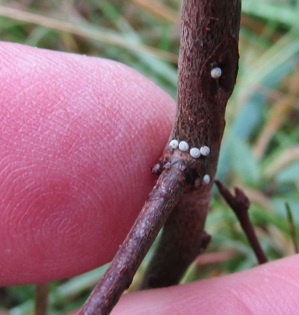Blog written by Robin Griffiths, December 2021
Visitors to Wiltshire Wildlife Trust reserves in Braydon Forest may notice pieces of red wool tied to some Blackthorn plants. These are to indicate there are Brown Hairstreak eggs on the plants, and are there in order to alert workers to the existence of the eggs and to prevent them cutting those plants.
The eggs are laid in late summer and hatch in spring, so the larvae can eat fresh young leaves and then pupate on the ground and emerge as adults in August.


